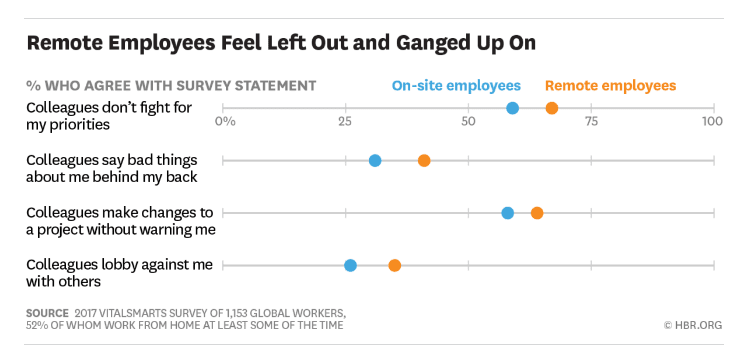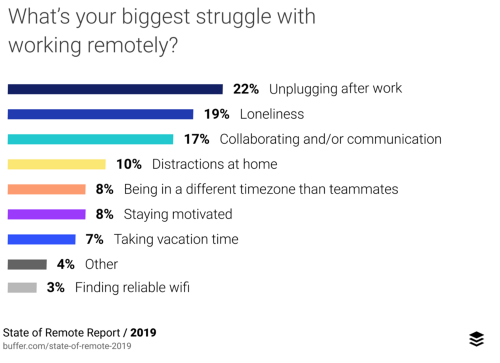As more and more businesses go remote, building a remote-friendly brand is crucial for attracting talent. Learn how to create one in this post.
It’s all changed so fast, hasn’t it?
Only a few months ago, we were all debating the pros and cons of remote work. A lot of us weren’t ready. Some were willing to take a leap of faith – but only piece by piece.
All of that has changed dramatically now thanks to the COVID-19 pandemic. Instead of nudging slowly towards a remote-first world, we’ve been thrust headfirst into it.
This sudden shift has opened up a world of opportunities and a pandora’s box of problems. If you can hire from anywhere, your talent, too, can work for any agency in the world. If you thought standing out as an employer was tough in your city, wait until you have to compete against the entire world.
The antidote? Your employer brand. Remote work comes with a lot of challenges and concerns. Address these accurately and you’ll often find yourself edging out better-funded competitors.
I’ll share the whats, whys, and hows in this blog post.
Your Employer Brand Matters (More Than Ever)
It’s no secret that your employer brand matters. Employees evaluate you just as you evaluate them. The more in-demand the talent, the more likely they are to avoid employers with a poor industry reputation.
According to one survey, nearly 4 in 5 employees research employers before applying for a job. Nearly 70% won’t accept a job from an employer with a bad reputation.

This is why agencies spend so much time cultivating their social media profiles and sharing pictures of their annual retreats. Those happy workplace pictures aren’t meant for clients; they’re meant for employees.
As with most things, the pandemic has accelerated this trend as well. If the employer brand mattered before the pandemic, it matters even more now.
A few reasons why:
- Employees have more options: In a remote-first world, employees aren’t constrained by location when applying for jobs. The people you want aren’t just dropping applications to agencies in the city; they’re sending them all across the world. A larger employer pool essentially means that top talent will only go to the most promising workplaces.
- Employers have more competition: Conversely, your competition just increased – significantly. You might have been among a handful of top agencies in your city, but now, you have to stand out among global employers. It might be easy to beat Mom & Pop Agency down the road, but can you beat BBDO and Ogilvy?
- Old perks don’t apply anymore: A bright and airy office, catered lunches, easy commute – all the standard perks don’t work in a remote-first world. Employers could get away with a poor work culture by offering these perks, but now, they have to work on their actual culture and reputation.
- Remote work concerns: Remote workers have different concerns than in-office workers. Promotions, employee assessment, work hours, and even office politics work differently in a remote-first setting. How you address these issues will impact your ability to hire.
- Post-pandemic stability: The pandemic turned large parts of the world topsy turvy. In such tumultuous times, a solid, reliable brand offers a great deal of stability to employees. Knowing that you’ll be there for them can be a source of reassurance.
Bottom line: if you hope to attract and retain top remote talent, you will have to invest even more strongly in your employer brand. And along the way, you’ll also have to reposition the brand to appeal to remote-first workers.
How to Create a Remote-First Employer Brand
Think of any standard employer branding playbook from before the pandemic. Most of them highlighted the same few things – positive workplace culture, great offices, an assortment of perks, and the promise of working alongside talented coworkers.
Few of these perks work in a remote-first world. Your “office” is now a room in your house, your coworkers are all crowded into a Zoom session, and “lunch breaks” are just 15 minutes in the kitchen.
It’s fair to say that you’ll need to toss the old employer branding playbook out of the window.
Instead, your remote-first employer brand should focus on one thing alone: giving remote workers the best possible work experience.
I’ll share some tips on how to go about doing this in the sections to follow.
Understand What Remote Workers Care About
There is a strong perception among managers that successful remote work is a matter of using the right tools and practices. If you could find just the right chat or project management tool, you’d be on your way to remote work nirvana.
That couldn’t be any further from the truth.
Remote work is less about tools, training, or even salaries, and more about freedom and choice. While the range of concerns can be wide, some of the core issues remote workers care about are:
1. Freedom
The happiest remote workers are those who had a choice to work remotely.
A survey of remote workers by TINYpulse concluded as much – workers who had a choice to work remotely were much happier with their jobs than workers who were forced to do so.
This choice manifests itself in small ways such as being able to choose how/when you work and limiting communication when needed.
2. Workplace Participation
Remote workers also worry about workplace culture. If you have in-office staff, remote workers can feel that they’re out of the loop when it comes to office politics, promotions, and networks.
A survey of 1,100 workers published in Harvard Business Review found the same – remote workers felt shunned compared to their in-house counterparts.

3. Commitment
Successful remote work requires a great deal of change. You have to completely alter deeply held beliefs and behaviors about socialization, surveillance, motivation, and productivity. If you’re used to popping over to a colleague’s desk to chat about a problem (or even last night’s game), you’ll have to change your behavior completely with remote work.
If your employees feel that you’re not fully committed to remote work – that it’s just a temporary measure – they won’t commit to learning these new behaviors. Why should they bother to pick up new habits when they know they’ll go back to their old offices eventually?
This is why there can be no half measures in remote work. You have to commit to it fully. Don’t just try it out for a few weeks; give it an extended run so that people are motivated to learn new behaviors.
The question now is – how do you go about addressing all these concerns in your employer brand?
I’ll share some solutions below.
6 Tips to Build an Employer Brand Remote Workers Love
Tacking “remote” onto a job and buying a Slack subscription doesn’t really make you a remote-friendly workplace.
As I mentioned above, you need to truly understand remote workers and address their concerns actively.
Here are 6 tips to help you achieve this goal:
1. Give them flexibility over their work hours
Enforcing standard 9-5 office hours when your people can theoretically work anytime, anywhere seems rather redundant.
Employees feel the same way. In a TINYpulse survey, remote workers who were asked to follow standard 9-5 office hours were less happy than their counterparts who could work for fewer hours across the whole week.
Unless the job requires that the employee be present during regular business hours, give them the freedom to pick their own (reasonable) timings. Some might choose to work throughout the week. Others might choose to put in marathon sessions four days a week.
Give them this flexibility and you’ll win their favor easily.
2. Reassure them that you’re all-in on remote work
As I said earlier, remote work doesn’t work when it’s done half-heartedly. Remote workers will shy away from working for you if they feel that in-office workers will have a leg up as far as career growth and learning are concerned.
Mitigate these concerns by showing that you’re long n remote work.
Some ways to do this include:
- Explicitly describe yourself as a “remote-first” business
- Sponsor remote-focused websites and events
- Adopt cutting-edge tools that make remote work easier
- Move management to remote locations
The last move can have a big impact on your “remote-friendliness”. If employees know that even the management is remote-first, they’ll get a lot of confidence that their concerns will be heard.
3. Address the loneliness problem
One of the biggest obstacles remote workers face is loneliness. Being locked away in a home office five days a week can make anyone feel isolated and alone. Even if you don’t interact much with them, sharing a physical office space with other people can make you feel included.
In fact, in Buffer’s 2019 State of Remote Work survey, respondents ranked “loneliness” as their second biggest concern.

This is admittedly not an easy problem to solve, but there are some ways you can help:
- Encourage remote workers to work out of shared spaces such as co-working spaces or coffee shops
- Invest in tools and tactics that promote more spontaneous conversations such as Slack “watercooler” channels, Zoom breakout rooms, etc.
- Create a stronger sense of camaraderie by investing in team building. Try some of the virtual team building exercises we shared earlier
- Encourage your people to be a part of different communities (virtual as well as real-world). You can even set aside a budget for real-world events such as conferences, meetups, aside.
4. Build stronger teams
In a remote-first business, you will eventually have a situation where new hires never even get a chance to meet their colleagues.
You can imagine then why they would be a little hesitant. So much of team work depends on trust. If you’ve never even met your team in-person, how much can you truly trust them?
Addressing this problem should be one of your top priorities. How well you can galvanize your employees to form cohesive teams will have a big impact on your performance as a business.
There is no silver bullet to creating strong remote teams, but all the standard team building advice still applies. Good communication, strong leadership, and dedicated team building activities can help.
5. Invest in better tools
As a remote-first agency, your goal should be to create as good an approximation of the office experience as possible. Poor communication doesn’t just affect the cohesiveness of your teams, it affects every part of your business.
The easiest way to fix this issue is to invest in remote-friendly collaboration tools.
Think of something like managing projects. A standard PM tool might not have collaboration capabilities built-in. You don’t need in-line discussions when you can just walk down the corridor and have an actual conversation.
With a remote-first team, that’s not really possible. So you need a PM tool that allows your people to, say, share files quickly and hold discussions in the same place.
For instance, Workamajig allows you to hold a conversation about any task or project right inside the Workamajig dashboard.
This makes it easy to keep track of issues and allows for more cohesive communication.
As an extension of this “better tools” policy, give employees the option to choose their own hardware. For example, Buffer, a remote-first company, gives all new hires their choice of laptop and $ 500 to set up their home office.
6. Share your employee-first measures
You might have the most remote-friendly policies in the world, but if no one knows about it, you won’t be able to attract the talent you want.
My final tip, thus, is to make sure that you talk about your policies publicly.
Here are some ways to do it:
- Share pictures and videos of your virtual workspace on your social media channels
- Talk about your policies on your hiring page
- Create blog posts about the tools and tactics you use to create friendlier remote offices
- Include details about your major remote working policies (free laptops, flexible timings, etc.) in your hiring ads
Building a remote-friendly employer brand is not an overnight process. It takes time, effort, and most importantly, commitment. If you’re going down this path, make sure that you’re all-in.
The rewards are tremendous – a truly flexible workplace that can attract the best talent from around the world.
Business & Finance Articles on Business 2 Community
(57)
Report Post




